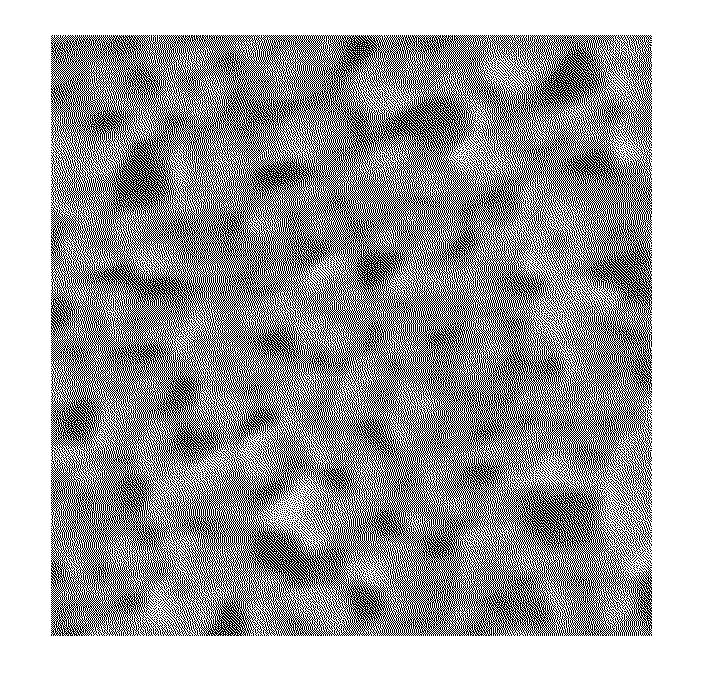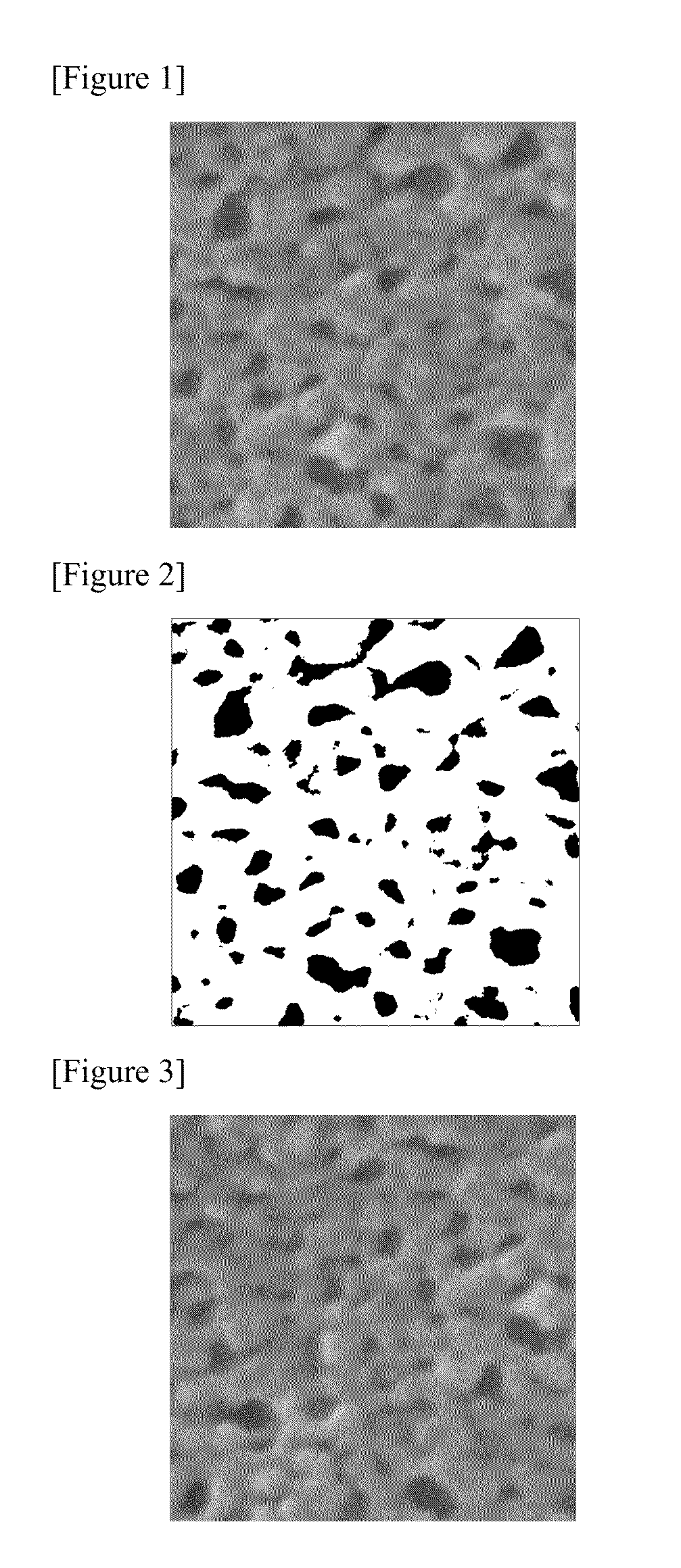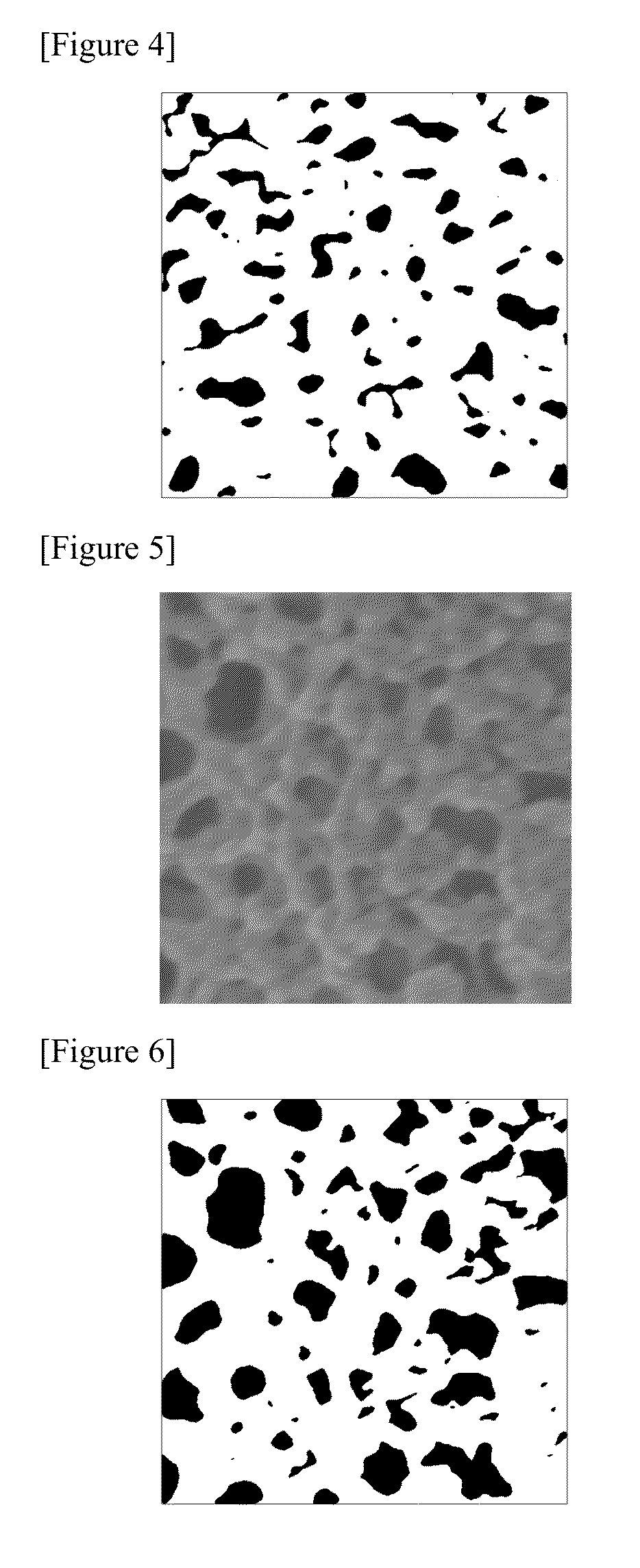Porous body and production method therefor
a production method and porous body technology, applied in the field of porous bodies, can solve the problems of limited improvement in the efficiency of substance permeation, difficult to remove only the skin layer, and difficult to achieve the effect of removing the skin layer during a continuous production process such as membrane formation
- Summary
- Abstract
- Description
- Claims
- Application Information
AI Technical Summary
Benefits of technology
Problems solved by technology
Method used
Image
Examples
example
Example 1
[0108]A polymethylene methacrylate (“UT300”, manufactured by Mitsubishi Rayon Co., Ltd.) and, as an aliphatic polyester, a polylactic acid resin whose D-isomer content is 1.4% and weight-average molecular weight determined by GPC measurement is 260,000 based on PMMA were fed at a weight ratio of 50 / 50 to a biaxial melt-kneading machine equipped with a T-die adjusted to have a lip clearance of 0.2 mm (HK-25D, manufactured by Parker Corporation, Inc.) to perform membrane formation from the resulting melt polymer at a temperature of 240° C. By controlling the drum temperature at 60° C. and adjusting the roll-up rate, an alloy sheet having a thickness of about 150 μm was prepared.
[0109]The thus obtained sheet was cut out into a 10 cm×10 cm square and immersed in 100 mL of a 20%-by-weight aqueous potassium hydroxide solution for 3 days to remove the polylactic acid by hydrolysis, thereby performing porosification of the sheet. Then, after immersing the resulting sheet in 500 mL ...
example 2
[0112]A porous sheet comprising a polymethyl methacrylate as a main component was obtained in the same manner as in Example 1, except that the melt-kneading temperature was changed to 200° C.
[0113]A cross-section of the thus obtained porous sheet was observed under a transmission electron microscope at a magnification of ×1,000 and a square micrograph of 2 μm×2 μm was taken. The thus obtained micrograph was Fourier-transformed and the pore diameter and an index of uniformity, (a) / (b), were determined based on the wavenumber and half value width of a peak in a graph plotted with the wavenumber on the abscissa and the strength on the ordinate. Further, the sheet was dissolved in deuterated chloroform and a proton nuclear magnetic resonance spectrum was measured to determine the ratio of isotactic polymethyl methacrylate in polymethyl methacrylate (% by weight). As shown in Table 1, the porous sheet obtained in Example 2 was a membrane having a uniform porous structure and being compos...
example 3
[0119]A polymethylene methacrylate (“MHF”, manufactured by Sumitomo Chemical Co., Ltd.), as an aliphatic polyester, a polylactic acid resin whose D-isomer content is 1.4% and weight-average molecular weight determined by GPC measurement is 140,000 based on PMMA, and a methyl methacrylate / methacrylic acid random copolymer (weight composition ratio: methyl methacrylate / methacrylic acid=96 / 4) were fed at a weight ratio of 44 / 55 / 2 to a biaxial melt-kneading machine equipped with a T-die adjusted to have a lip clearance of 0.2 mm (HK-25D, manufactured by Parker Corporation, Inc.) to perform membrane formation from the resulting melt polymer at a temperature of 240° C. By controlling the drum temperature at 60° C. and adjusting the roll-up rate, an alloy sheet having a thickness of about 150 μm was prepared.
[0120]The thus obtained sheet was cut out into a 10 cm×10 cm square and immersed in 100 mL of a 20%-by-weight aqueous potassium hydroxide solution for 3 days to remove the polylactic a...
PUM
| Property | Measurement | Unit |
|---|---|---|
| porosity | aaaaa | aaaaa |
| diameter | aaaaa | aaaaa |
| size | aaaaa | aaaaa |
Abstract
Description
Claims
Application Information
 Login to View More
Login to View More - R&D
- Intellectual Property
- Life Sciences
- Materials
- Tech Scout
- Unparalleled Data Quality
- Higher Quality Content
- 60% Fewer Hallucinations
Browse by: Latest US Patents, China's latest patents, Technical Efficacy Thesaurus, Application Domain, Technology Topic, Popular Technical Reports.
© 2025 PatSnap. All rights reserved.Legal|Privacy policy|Modern Slavery Act Transparency Statement|Sitemap|About US| Contact US: help@patsnap.com



